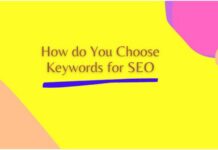Creating an SEO optimised article is essential for any business looking to enhance its online presence. As an SEO consultant, I understand the importance of crafting content that not only resonates with your audience but also ranks well on search engines.


Here’s a step-by-step guide to help you create articles that achieve both these goals.
Understand Your Audience and Keywords
- Audience Research: Before you start writing, know who you’re writing for. Identify your target audience’s needs, preferences, and pain points. This understanding will guide your content creation process.
- Keyword Research: Use tools like Google Keyword Planner or SEMrush to find relevant keywords. Look for terms with high search volumes but moderate to low competition. These are your gold mines.
Craft a Compelling Title
- Use Primary Keyword: Include your main keyword in the title, making it clear what the article is about.
- Make it Engaging: Your title should spark interest. Use numbers, questions, or powerful adjectives to make it stand out.
Write for Your Audience First, Search Engines Second
- Valuable Content: Ensure your article provides real value to your readers. Solve a problem, answer a question, or offer unique insights.
- Natural Keyword Integration: Use keywords naturally within the text. Overstuffing can harm readability and SEO.
A great example of a well-designed website with copy crafted for their audience first is
https://www.agavelux.com.au/. They summarise their site using this description:
“Australia’s home of hand-crafted Mexican spirits. Discover spirits sourced directly from our small-batch Mexican producers and embark on a sensory journey that captures the essence of Mexico’s time-honoured traditions and flavours.”
Structure Your Article for Readability
- Use Headings: Break your content into sections with H2 and H3 headings. This not only makes your article easier to read but also helps search engines understand its structure.
- Short Paragraphs: Keep paragraphs short to improve readability. Aim for 2-3 sentences per paragraph.
- Bullet Points and Lists: Use bullet points to summarise information or present lists. They make your content easier to scan. We have made full use of short, bulleted points in this article as a great example of their use.
Check out this article, published by Assist Group, which makes great use of heading and paragraph structure https://www.assist-group.com.au/blog/employee-health-and-wellbeing
The main keyword optimised for is ‘Employee Health and Wellbeing Programs’ and you can see this keyword, and variations of it, used in the sub headings. For example, someone reading about employee health and wellbeing may also be interested in the costs of these programs, the benefits (increased morale, retention, lower healthcare costs) and the benefits.
Optimise Your Meta Description
- Include Keywords: Insert your primary keyword in the meta description. It should summarise the article’s content compellingly.
- Keep it Under 160 Characters: This ensures the entire description is visible in search engine results, enticing users to click through.
Use Internal and External Links
- Internal Links: Link to other pages or articles on your website. This helps search engines crawl your site and understand its structure.
- External Links: Linking to reputable sites adds value to your content and can boost your site’s credibility.
Optimise Images
- Relevant Images: Include images that complement your content. They can break up text and improve engagement.
- Alt Text: Describe your images using alt text. Include your primary keyword if it naturally fits. This improves accessibility and SEO.
Mobile-Friendliness and Loading Speed
- Responsive Design: Ensure your website is mobile-friendly. More people are accessing content via smartphones, and search engines favour mobile-optimised sites.
- Optimise for Speed: Use tools like Google PageSpeed Insights to test and improve your page’s loading time. Slow-loading pages can negatively impact rankings and user experience.
These points on mobile-friendliness and load time are easy to say, but from my experience, hard to do. It may be best to consult with your web developer or an experienced SEO consultant who can provide expertise on these matters.
Monitor and Improve
- Analytics: Use Google Analytics to monitor your article’s performance. Look at metrics like bounce rate, average time on page, and conversions.
- Update Regularly: SEO is not a one-time task. Update your content regularly to keep it relevant and maintain or improve its search engine ranking.
I believe that SEO optimised articles are a cornerstone of a successful online marketing strategy. By following these steps, you’re not just creating content; you’re building an asset that will drive traffic, engage readers, and enhance your brand’s online presence.
Remember, SEO is a marathon, not a sprint. Patience, persistence, and continuous learning are key to your success.

























